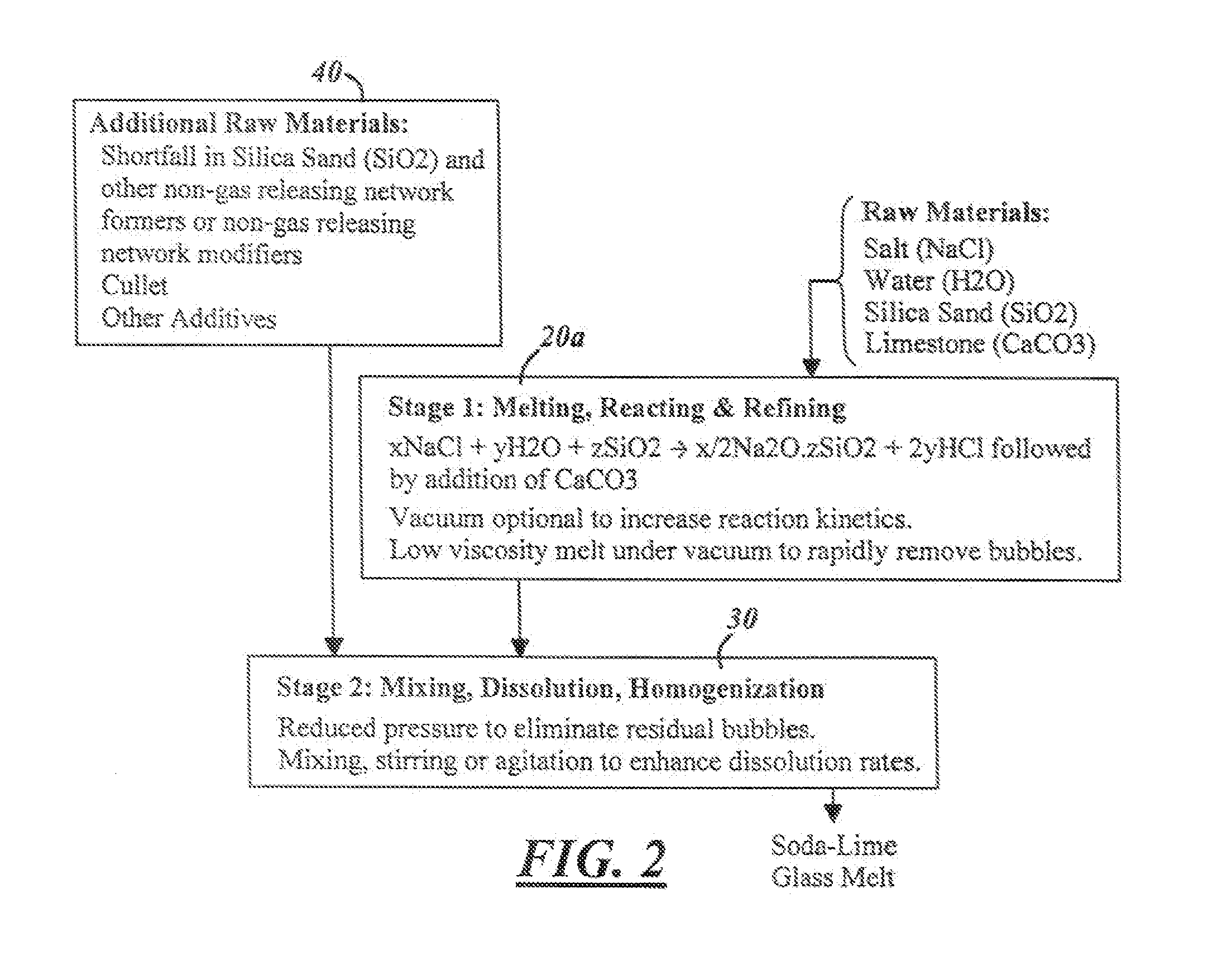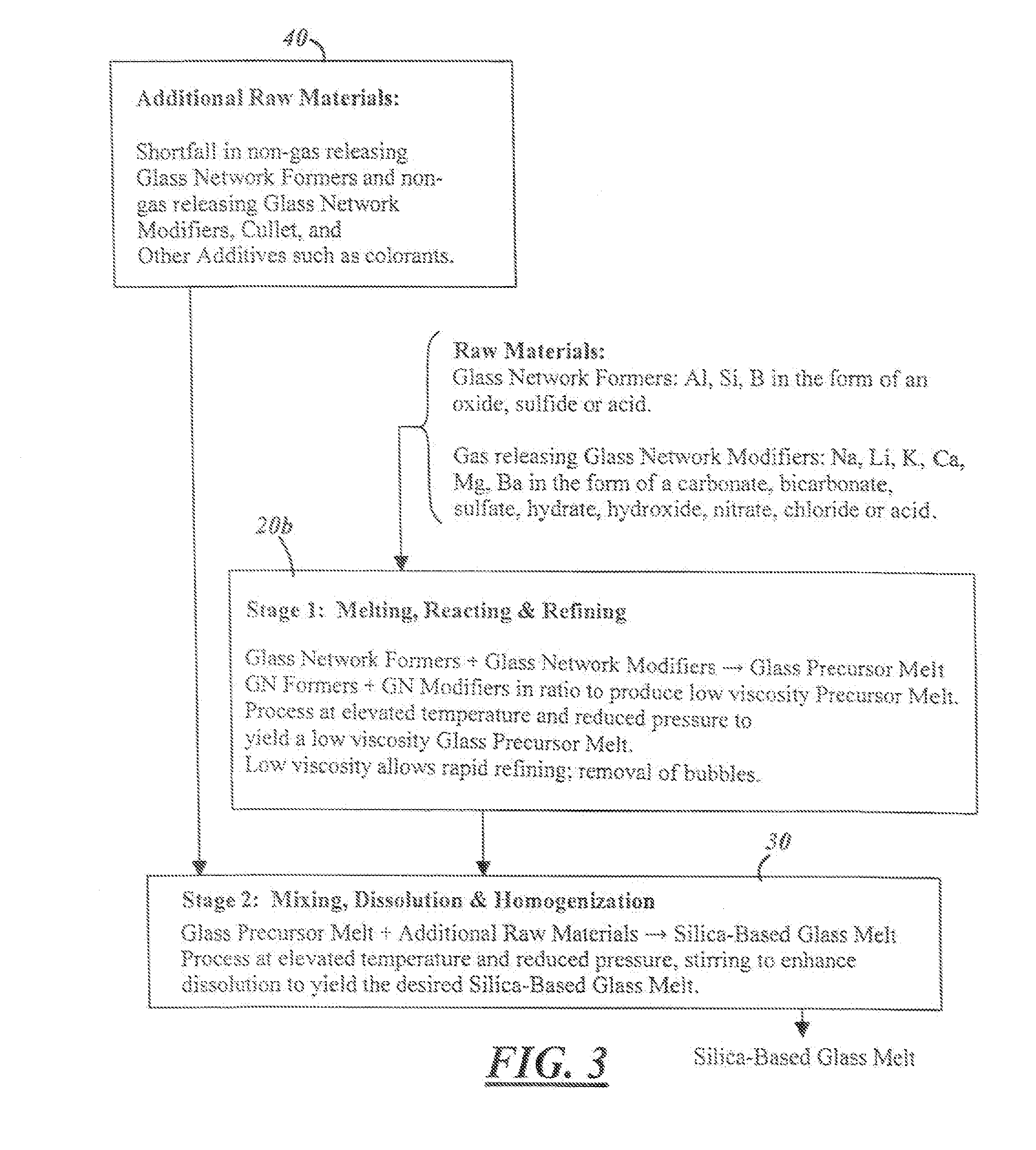Process for Melting and Refining Silica-Based Glass
a technology of silica-based glass and refining process, which is applied in the direction of glass making apparatus, glass furnace apparatus, manufacturing tools, etc., can solve the problems of high energy input and large space in the furnace process, and achieve the effect of large space and high energy inpu
- Summary
- Abstract
- Description
- Claims
- Application Information
AI Technical Summary
Benefits of technology
Problems solved by technology
Method used
Image
Examples
second embodiment
[0018]FIG. 2 illustrates the process in accordance with the present disclosure. In this process, the first stage 20a involves melting, reacting and refining salt (NaCl) and silica (SiO2) in the presence of water (H2O, preferably steam) to produce sodium silicate (Na2O.SiO2) and release hydrogen chloride (HCl) gas. This step is immediately followed by addition of calcium carbonate (CaCO3) such as limestone. The calcium carbonate is rapidly melted, again to produce a low-viscosity sodium-calcium-silicate solution in liquid phase to promote release of gaseous reaction products. Again, the first stage 20a can be carried out under vacuum further to promote release of gaseous reaction products. The second stage 30, which involves mixing, dissolution and homogenization of the precursor melt with additional raw materials 40 in FIG. 2 is the same as the second stage in FIG. 1. The result of either process is a silica-based glass melt.
third embodiment
[0019]FIG. 3 illustrates the process in accordance with the present disclosure. In this process, the first stage 20b involves melting, reacting and refining substantially all of the gas releasing glass network modifiers required for the desired final melt composition with appropriate chemical ratio of glass network formers to produce a glass precursor melt having low viscosity from which bubbles readily migrate. In the second stage, the glass precursor melt is mixed with non-gas releasing glass network modifiers and / or non-gas releasing glass network formers to achieve the desired final glass melt composition. Cullet and other additives such as colorants may be added in the second stage 30, which may include stirring.
[0020]The first stage 20 in FIG. 1 or 20a in FIG. 2 or 20b in FIG. 3 preferably is carried out at a temperature in the range of about 900 C to about 1700 C. The second stage 30 in FIGS. 1, 2 and 3 preferably is carried out at a temperature greater than about 900 C. Most...
PUM
| Property | Measurement | Unit |
|---|---|---|
| viscosity | aaaaa | aaaaa |
| residence time | aaaaa | aaaaa |
| viscosity | aaaaa | aaaaa |
Abstract
Description
Claims
Application Information
 Login to View More
Login to View More - R&D
- Intellectual Property
- Life Sciences
- Materials
- Tech Scout
- Unparalleled Data Quality
- Higher Quality Content
- 60% Fewer Hallucinations
Browse by: Latest US Patents, China's latest patents, Technical Efficacy Thesaurus, Application Domain, Technology Topic, Popular Technical Reports.
© 2025 PatSnap. All rights reserved.Legal|Privacy policy|Modern Slavery Act Transparency Statement|Sitemap|About US| Contact US: help@patsnap.com



